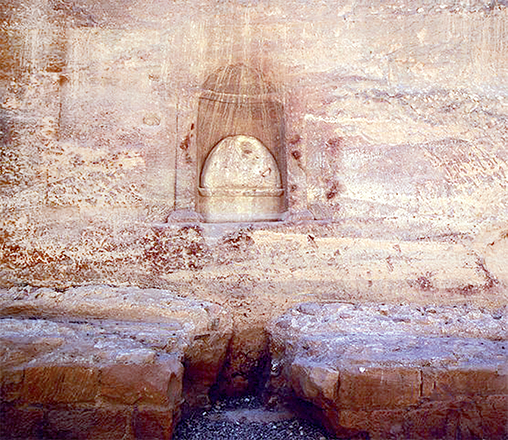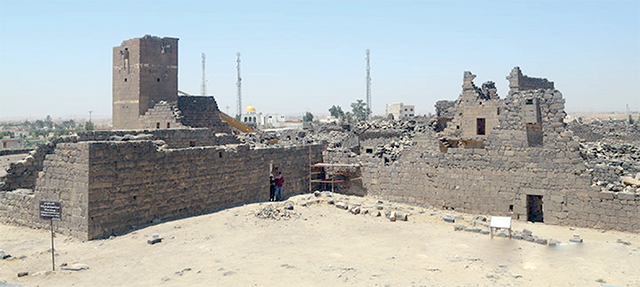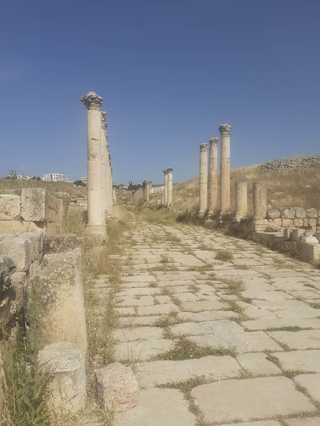You are here
American scholar examines spread of Roman-era religious cult
By Saeb Rawashdeh - Jul 31,2017 - Last updated at Jul 31,2017

Vivian A. Laughlin
AMMAN — The spread of a religious cult through the Middle East to Italy during Roman times is the focus of a scholar from the US currently conducting research in Jordan.
Vivian A. Laughlin is a 2017/18 Bikai fellow at the American Centre of Oriental Research (ACOR) and a PhD candidate at the Institute of Archaeology at Andrews University, the US. Her field research focuses on “Serapis in Hisban: A Historical Narrative of Enculturation of an Ancient Jordanian City”.
The Serapis Cult was originally a cult comprised of Greek and Egyptian religions and philosophies that made the supreme gods Osiris and Apis, in duality, become Serapis, Laughlin explained in a recent interview with The Jordan Times.
“I must say that I didn’t choose Serapis as a paradigm of religious syncretism,” the scholar said.
“Once I began research in Rome, which was initially a broad study of the ‘Egyptian’ influences there, the research as well as the artifact analysis, lead me to a particular Hellenistic-Egyptian Cult, which happened to be the Cult of Serapis,” she explained.
“It is my belief that the Hellenistic-Egyptian Serapis Cult strongly influenced the expansion of the Roman Empire,” Laughlin highlighted.
The beginning of the Roman Empire is directly associated with Augustus, who became the Egyptian pharaoh after the Battle of Actium 31BC, she stated.
“Once becoming a pharaoh, he utilised the Hellenistic-Egyptian Serapis cult in similar ways as the Alexandrians did, as he was a fan of Alexander the Great. The utilisation of this cult was fundamental in the acquisition of various territories, but, more importantly, with trade and the spreading of the Imperial Cult,” the scholar pointed out.
When Augustus utilised this cult, Laughlin explained, he created a hybrid form, wherein, all of the Roman gods and their philosophies were intertwined with both the existing Greek and Egyptian gods — and acquisitioned Isis as the new supreme deity.
“Because Ptolemy had already implemented the Serapis cult and it was originally intended for export abroad, many people in the Near Eastern lands already had familiarity with it. This new hybridity of the cult would not disrupt the foundation of their religious belief, but rather solidify it, and perhaps even promulgate harmony amongst the masses,” she said.
Numerous archaeological sites in Jordan show the cult existed: “Surveying and ethnographical research of Jordan showed a duality and syncretism throughout the country. In some areas, there was a Ptolemaic presence of Serapis, in others a very Romanised hybrid form of Isis and Serapis,” the scholar said.
”Then there were some areas that showed a conglomeration of both, while a few showed subtleties. The poly-interpretable character of the religious culture ultimately exhibited that the cult of Serapis functioned as a solid and cohesive paradigm, which allowed the varying gods that were already worshipped in particular regions of Jordan to set precedence for the cult.”
“Perhaps as the Imperial Cult grew stronger, the more centralised and Romanised an area became that would, of course, exhibit a stronger Roman presence. But even within this, it left room for the culture of the region to still manifest itself within,” Laughlin explained.
She plans to complete her field research this summer in preparation for a future exploratory excavation probe at Tell Hisban, near Madaba .
“Because Hisban has reported material culture that has either been manufactured during the Ptolemaic Period, or depicts influences of either a Serapis, Egyptian or Greco-Roman nature, a probe is necessary to hopefully elucidate if there was a temple there, whether or not it was Hellenistic or Roman, and if it was dedicated to Serapis. This will truly help us to understand more about the intricate layers to this ancient city,” Laughlin noted.
Related Articles
AMMAN — The Roman Empire embraced religious syncretism (an amalgamation of different religions), and Roman historians consistently showed a
AMMAN — Located near Mafraq, Umm Al Jamal is another ancient Nabataean site that has continuous occupation during Roman, Byzantine and Islam
AMMAN — A group of archaeologist discovered a hypogean (underground) tomb in 2001 underneath the rocky foundations of the early 2nd-century



















